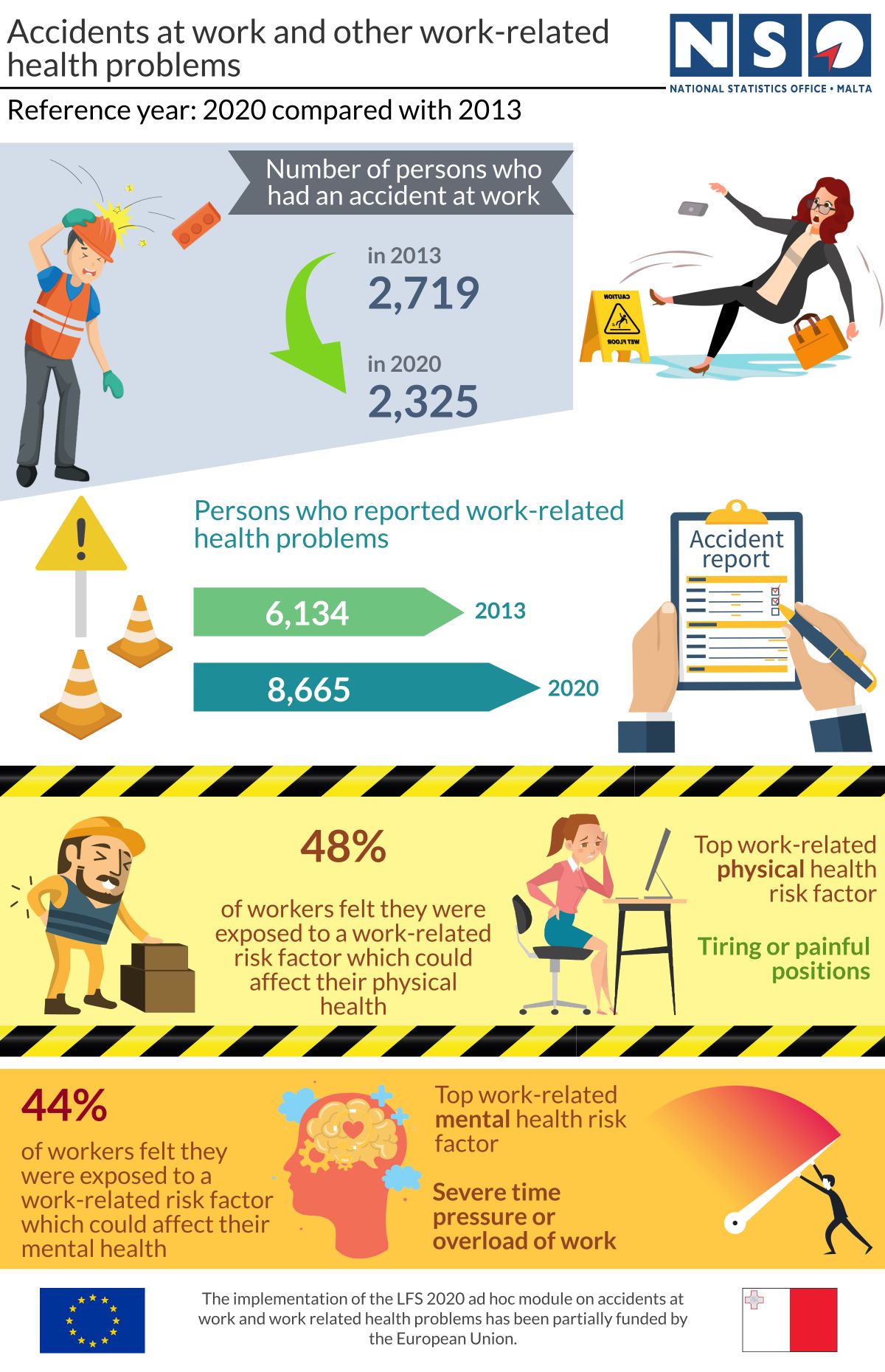The proportion of workers in Malta saying they feel exposed to risk factors associated with their mental health more than tripled between 2013 and 2020, reaching 44 per cent, while almost half of all employees said they feel at risk from physical threats to their health.
The data was extracted by the National Statistics Office (NSO) from the Labour Force Survey (LFS) carried out during 2020, partly financed through EU grants. The LFS is a household-based survey and is used as a monitoring tool across the European Union for assessing progress made in various spheres of labour market and social statistics.

The share of employed persons who reported exposure to mental health risk factors in 2013 was 13 per cent, but in 2020 this increased to almost one in every two employees, with the incidence rising with the worker’s level of education.
In fact, more than half those with a high level of education felt at risk, with the proportion falling to 37 per cent among those with a low level of education.
This increased exposure to mental health risk factors may have resulted due to more awareness in mental health over the years, while the COVID-19 pandemic likely also had an impact.
In 2020, more than half of those who felt exposed to such risks identified severe time pressure or overload of work as the main reason for such risk (50.9 per cent).
A further 29.5 per cent felt that dealing with difficult customers, patients or pupils was affecting their mental health.
Exposure to mental health risk factors varied according to one’s occupation and economic activity. In fact, results showed that persons employed as professionals (54.4 per cent) and managers (53.3 per cent) felt more exposed to risk factors associated with their mental health compared to other occupational groups.
Moreover, persons who worked in public administration, defence, education, human health and social work activities (52.4 per cent) and in financial and insurance activities (45.3 per cent) felt more exposed to these risk factors.
On the other hand, the majority of employed persons with a secondary education or less felt more exposed to physical risk factors (58 per cent) as opposed to those with a post-secondary (44.3 per cent) and tertiary (42.9 per cent) level of education.
The type of risk factors identified by respondents differed depending on the highest level of education and the main occupation. Workers with a low level of education were more likely to report a higher exposure to handling of heavy loads (34.9 per cent) given the higher predominance of manual jobs within this category.
Persons with a medium level of education felt mostly exposed to tiring or painful positions (25.4 per cent), while those with a high level of education felt mostly exposed to activities involving strong visual concentration (34 per cent). Persons with a high level of education are more likely to use the computer frequently, which may result in greater risk for physical eye strain.
Accidents at work
Labour Force Survey results indicated that in 2013, there were 2,719 persons who had an accident at in the course of their work which resulted in physical harm. In 2020, it was estimated that there were 2,325 persons who had an accident at work.
Work-related health problems
In 2020, 8,665 persons (2.4 per cent) aged 15 and over who were either employed or were employed in the past claimed that they suffered from one or more physical or mental health problem, illness or disability caused or made worse by work during the preceding 12 months.
The share of persons who reported physical or mental health problems associated with their work in 2013 was 6,134 persons or 2.1 per cent.
Results showed that more males when compared to females reported work-related health problems (64.3 and 35.7 per cent respectively).
Stress, depression or anxiety were the most common health problems associated with work (46.3 per cent).

A further 36.6 per cent identified bone, joint or muscle problems resulting from, or made worse, by their job.
More than half of respondents who endured work-related health problems found it difficult to carry out day-to-day activities, either at work or in their private lives (54.9 per cent).
Almost 43 per cent of the respondents did not take any time off or took less than one day off due to their health problem(s), while just over 40 per cent took four days or more off from work due to this health problem.
MFSA flags ‘misalignment’ between objectives and public expectations of green loans
Green investment is nonetheless expected to balloon over the coming years
Super rare Ferrari Daytona SP3 spotted cruising along Malta’s roads
The car is currently being traded for a whopping €4 million
Mandatory skills pass for Maltese and EU nationals deferred for a year
The skills pass remains obligatory for third country nationals






